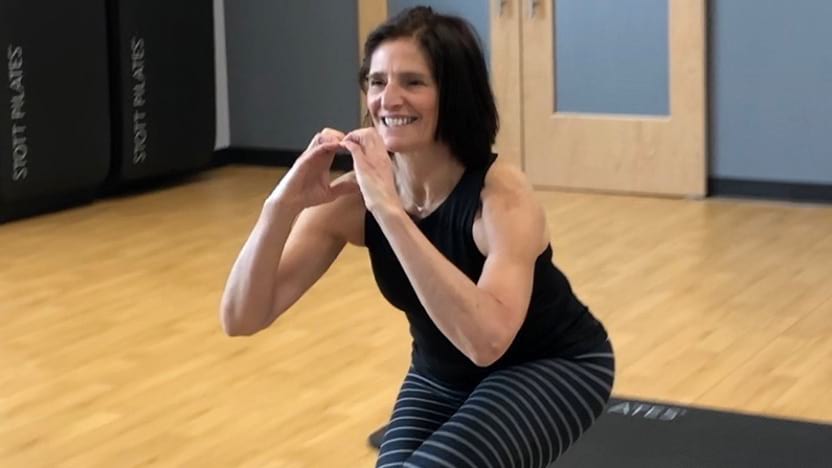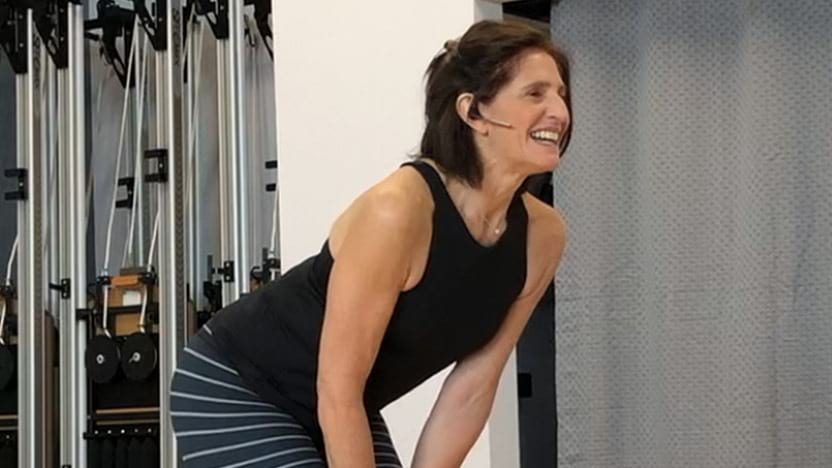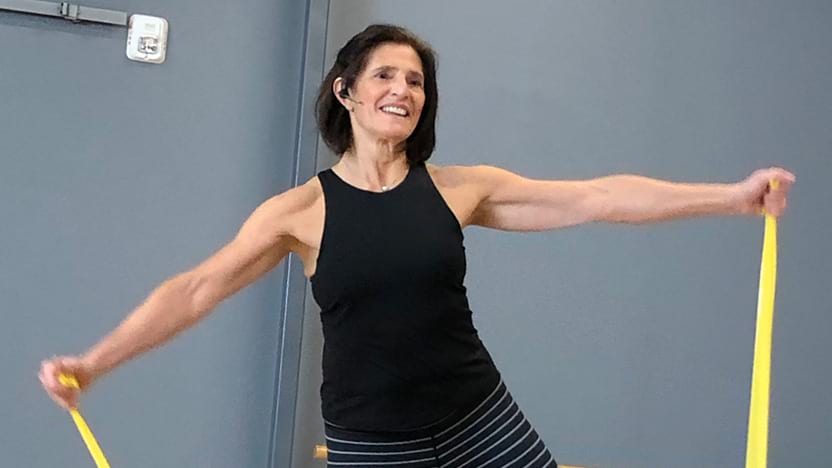
In less than a month, Merrithew® Master Instructor Trainer PJ O’Clair, owner of Praxis Performance and Wellness, has become an IT whiz, an audio-visual technician, and an expert at teaching mindful movement virtually. A technical learning curve, yes, but nothing this experienced and innovative instructor couldn’t handle.
With years of experience teaching on-camera in Merrithew DVDs, and more recently for our new streaming platform, Merrithew Connect, PJ was able to quickly transition her studio business online when the lockdown was declared in Massachusetts.
With a new microphone, a professional AV mixer, and after more than a dozen one-on-one calls with clients to walk them through the online sign-in and set-up process, PJ’s been able to offer the same high quality instruction and community atmosphere in her virtual classes that her clients know and love about her studio.
Not only has she been able to keep her studio afloat during this uncertain time, but she’s also been able to keep five instructors on the payroll and attract 70 new regular clients to her virtual classes.

How to create a successful virtual studio experience for clients
- Prepare your workout in advance and share your program notes with students, they love this and it makes it easier for them to follow along
- Explain what props will be needed in the session and offer modifications
- Verbally invite participants to go at their own pace and remind them to take breaks when necessary. Reinforce that they should stop if something doesn’t feel right for them
- Ask them to watch you do the exercise first, especially for prone exercises where they won’t be able to watch you while they’re moving
- Offer modifications or provide levels for each exercise, using phrases like, “Level 1 do this, or Level 2 do this”
- Make class titles clear. For instance, if you call your class STOTT PILATES® Matwork Basics or 101, the client will know it’s for an entry-level exerciser. Whereas, Pilates for Athletes is clearly for those who are conditioned
- Keep your cues simple and on-point. Our virtual community has grown and I have people attending the online classes whom I’ve never seen move before in real life, so it’s really important for my cues to be clear, specific and easy to digest. I always tell clients what the focus of each exercise is and where they should be feeling it, so that’s why I say, ‘Keep it Simple Sugar’
How to keep your virtual classes dynamic and engaging for repeat clients
PJ continues to offer an extensive schedule online for various levels, with five to six classes per day from Monday to Friday and two to four classes on weekends, including STOTT PILATES Matwork, Total Barre® and Merrithew Fascial Movement.
“I’m offering my regular workout schedule and I’m also hosting specialized sessions that provide participants with an educational component. For example, I offer a Posture Plus Class once a week which is great for all levels,” she says.
“Every Monday at noon, I’m putting on a ‘Movement Lab’ for 30 minutes. These short movement workshops go in-depth about popular exercises, such as the plank, squat and lunge, explaining the proper biomechanics and benefits,” PJ says.

What’s been a silver lining of teaching virtually?
During this time, PJ’s been encouraging her clients to invite any family members residing with them to join in on their workouts, making a point of celebrating community despite clients’ physical separation.
“Many clients want to continue taking virtual classes even after this crisis subsides. They like having the option of doing at-home workouts with live instruction,” she says. “I’m really happy to see our online community growing and sharing in the joys of movement together, but apart.”